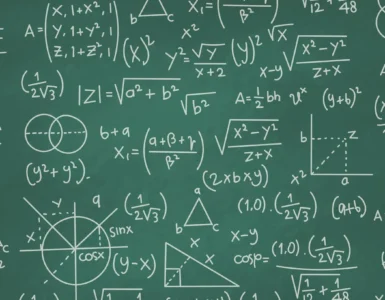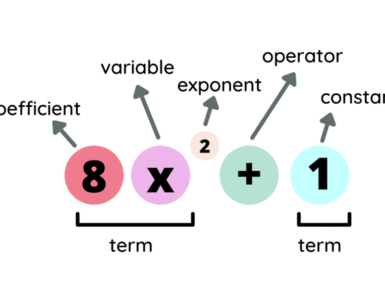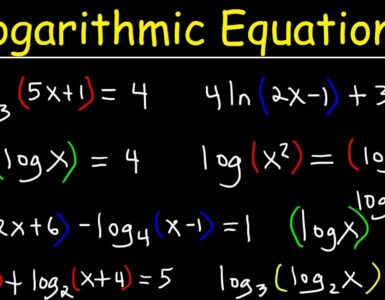Matrices are a fundamental concept in mathematics, with applications in algebra, computer science, physics, engineering, economics, and many other fields. Matrices provide a way to organize and manipulate data, solve systems of equations, and perform complex transformations. In this article, we will explore what matrices are, how they are used, and the operations you can perform on them, as well as their real-world applications.
What is a Matrix?
A matrix is a rectangular array of numbers, symbols, or expressions arranged in rows and columns. Each number or element in the matrix is referred to as an entry. The size or dimensions of a matrix are given by the number of rows and columns it contains. A matrix with
A general matrix is written as:

Where each
Types of Matrices
There are several specific types of matrices, each with unique properties:
1. Row Matrix: A matrix with only one row.

2. Column Matrix: A matrix with only one column.

3. Square Matrix: A matrix with the same number of rows and columns (i.e.,

4. Diagonal Matrix: A square matrix in which all elements outside the main diagonal are zero.

5. Identity Matrix: A special diagonal matrix where all the diagonal elements are equal to 1.

6. Zero Matrix: A matrix in which all elements are zero.

Operations on Matrices
Matrices can be manipulated through several operations, such as addition, subtraction, multiplication, and finding the determinant. These operations are used to solve systems of equations, perform linear transformations, and much more.
1. Matrix Addition and Subtraction
To add or subtract two matrices, the matrices must have the same dimensions. Corresponding elements from each matrix are added or subtracted.
Example: Matrix Addition Given two matrices

2. Scalar Multiplication
Scalar multiplication involves multiplying each element of a matrix by a scalar (a real number).
Example: Scalar Multiplication Given a matrix

3. Matrix Multiplication
Matrix multiplication is a bit more complex. To multiply two matrices
The element in row
Example: Matrix Multiplication Given matrices

Multiply

4. Determinant of a Matrix
The determinant of a square matrix is a special number that can be calculated from its elements. It provides important information about the matrix, such as whether the matrix is invertible.


Example: Finding the Determinant

5. Inverse of a Matrix
The inverse of a square matrix




The inverse is:

Applications of Matrices
Matrices are widely used in various fields of study and in practical applications:
1. Solving Systems of Linear Equations
Matrices are used to represent and solve systems of linear equations. The system:

Can be written as the matrix equation

Solving this system using matrices (via methods like Gaussian elimination or matrix inversion) provides a systematic approach for finding
2. Computer Graphics and Transformations
In computer graphics, matrices are used to perform transformations such as rotation, scaling, and translation of objects in 2D and 3D space. For example, a 2D rotation matrix that rotates a point by an angle

By multiplying this matrix with the coordinates of a point, you can rotate the point around the origin.
3. Physics and Engineering
Matrices are used to model systems in physics and engineering. In mechanics, for example, matrices can describe the state of a system and predict how it will evolve over time. In electrical engineering, matrices are used to model circuits and solve for unknown currents and voltages.
4. Economics
In economics, matrices are used in input-output models, which represent the relationships between different sectors of an economy. They can help analyze production, consumption, and resource allocation.
5. Cryptography
Matrices are used in cryptography to encode and decode messages. Matrix multiplication can be used to scramble information, and the inverse matrix can be applied to recover the original message.
Common Mistakes to Avoid
- Dimension Mismatch: Make sure that matrix dimensions align correctly for operations like addition and multiplication. You can only add or subtract matrices of the same size, and for multiplication, the number of columns in the first matrix must match the number of rows in the second.
- Not Using Inverses Correctly: Remember that not all matrices have an inverse. A matrix is invertible only if its determinant is non-zero.
- Forgetting the Order in Multiplication: Matrix multiplication is not commutative, meaning
Conclusion
Matrices are an indispensable tool in many areas of mathematics and applied sciences. Whether you’re solving systems of equations, performing transformations in computer graphics, or modeling complex systems in physics or economics, matrices provide a powerful way to represent and manipulate data. By mastering the operations and applications of matrices, you’ll gain a deeper understanding of their usefulness in both theoretical and practical contexts.







Add comment